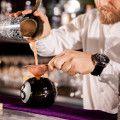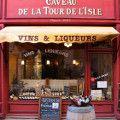I have visited thousands upon thousands of restaurants over the years.
Both from the kitchen door as a sales rep for Qualifirst Foods and as a customer, fascinated by the transformative power of quality food coming out of a superior kitchen.
Reading non-stop about cuisine, recipes, restaurant management, the food industry and virtually any subject associated with food is what I do when I am not focusing on quality ingredients, my main knowledge base.
Listening and talking to chefs, great and unknown (for now), about their ideas has enriched my life and deepened my understanding of the industry.
Listening and observing top ‘front-of-the-house’ people talk about their tricks of the trade and techniques that made their restaurants famous, and also full, led me to an understanding of the symbiotic relationship between the front of the house and the kitchen brigade.
Symbiosis in this case meaning working together for the betterment of both parties to achieve a result neither could have achieved working alone.
So let us together look at a very specific situation where a customer leaving a restaurant meal either says to someone or thinks out loud those words at are music to any Chef or restaurant owner’s ears: “That was great, I want to come back“.
What are the elements of a restaurant experience that make this happen and why is it so rare? Keep in mind that in a successful, profitable restaurant, about 15% of the people are regulars, returning weekly.
The Beginning … the customer walks into the restaurant:
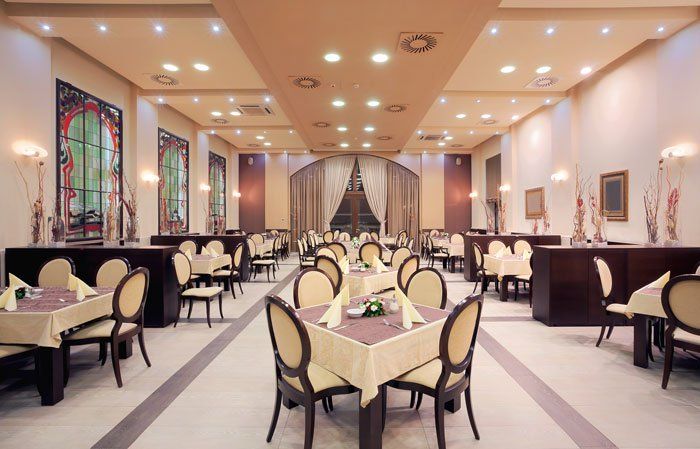
With (really) all due respect to the kitchen brigade and the Chefs, the reality is that the first thing the customer sees is the front of the house and it does have to be perfect. This does mean perfect paint, perfect lighting, clean fresh air at the right temperature, decorated in good taste, and with a practical layout.
It is the responsibility of the front of the house with the restaurant owner to attack this continuously because the primary role of the restaurant at this early entrance of the customer is comfort. This means:
If the customer is stressed the restaurant should relax.
If the customer was worried about the restaurant all visual cues should reassure.
- If the customer is returning decor elements are like a ‘lunch home’.
- If the customer has a headache there should be confidence it will reduce.
- Anticipation for great food.
- If the customer is repeating a visit anticipation of the good time last time.
Don’t be dismayed if a lot of items in this list are not addressed in your restaurant. Running a professional foodservice operation is very tough work and you really cannot do everything. Qualifirst has always tried to bring our intelligence in knowledge to our customers in parallel with qualitative products simply because in your success is our success.
The customer has shed their coats
into a secure area with gleaming brass hooks and numbered. It might seem odd to be so precise when talking about where you hang a customer’s coat but people are particularly attentive about their possessions and if a restaurant invests in making their cloakroom area look secure, it will be noticed.
The goal “That was Great! I want to come back!” is always an accumulation of small advantages, half from the front of the house, half from the kitchen brigade.
The customer is being led to a table
which should be absolutely clean. The glassware should be blinding. The seat comfortable and the table the right height.
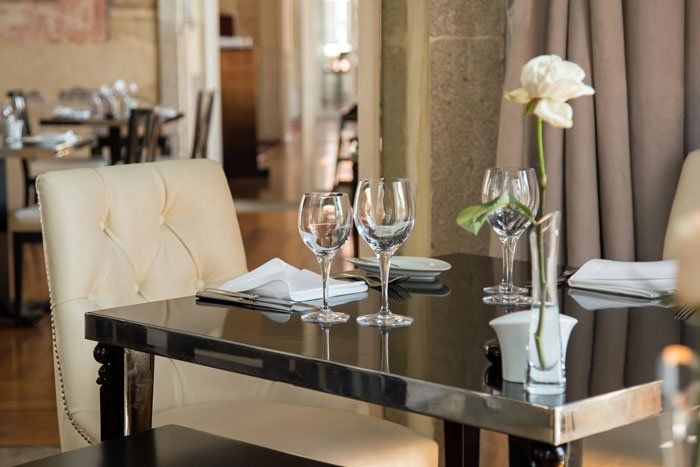
Notice I did not say ‘clean’ here … I said blinding. I re-learn the importance of this lesson every time I am in Paris and go to the Bistro du Louvre, today run by Hyatt and called Brasserie du Louvre. I go there every time I am in Paris because my great Grandfather, Arthur Farges, was in charge of all wine at the Hotel du Louvre for over 40 years. The service here is some of the best in the world. It opens at noon … sharp … and I am always early because it fills up quickly due to the reality that the food is excellent. Early I look into the restaurant and what do I see? Immaculate staff taking teapots of steaming hot water from table to table, up-ending each glass to polish them individually. Here is a front of the house making a statement even before the doors open.
Offering water, handing out the menu. Menus have to be perfect. A stained menu should be replaced. The front and inside covers of the menu should comfort, inform, and address customer needs of the moment. The wine list should be local and indulgent, offering value and also offering adventure. I am constantly amazed at this infatuation restaurants have with offering a cheap glass of wine. Pick a great red wine and great white wine and serve it as the house selection at the lowest price point. Intelligent people know that if there is a $9 glass of wine it can never be good, so why cater to negative expectations? In Europe a restaurant is judged by its house wine and restaurateurs fight for a good one. This is becoming standard here.
A modern subset to the front of the house and the kitchen is the bar, often with a manager, in charge of liquids (generally), everything from cocktails & wine to coffee. They should be involved. The Chef should have input only because generally speaking, the Chef has the 2nd best wine palate after the Sommelier. Restaurant owners have to face reality here: just because you own a restaurant does not elevate your taste buds to professional heights. It can be worked on and in fact I feel that Sommelier training is a good idea for a restaurant owner in addition to culinary training of some degree.
The customer is handed a menu …
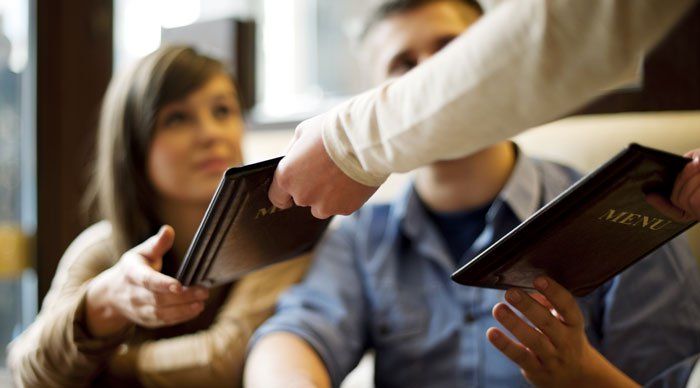
the menu I talk about in another post but to get an ecstatic customer vowing to return, the menu has to wow.
Fair prices are mandatory in context of the ingredients used. A restaurant taking shortcuts, using substandard ingredients, and slinging cheap dishes rarely creates fans, except in people looking for strict value, Strict value customers would be satisfied eating from a bucket if the price was right. Sounds harsh? Yes, and if it was untrue I would feel bad saying it this way. This kind of customer is transient at best. Quality ingredients and a great Chef is a bridge to a long life.
The food ordered is going to come from the kitchen. Now it is the Kitchen Brigade’s turn, for the Chef and his team to shine and finish the story the front of the house started. The clean dishes from a diligent dishwasher in the back and delicate aromas escaping from the kitchen despite quiet but powerful fans in the kitchen is the ordering environment for the customer seeking to be impressed. Selections are made and the true test starts. Customers do not really test the front of the house but they always do test the food.
The order arrives in the kitchen and the Chef directs his team to make it perfectly, consistently, all delivered on time. Production begins and this is where a certain magic occurs. Skills meet ingredients and the result is professionally cooked food, better than the customer can make.
This is where the silent partners of the kitchen brigade start working, the individual ingredients selected as building blocks for the dish. You want to wow the customer? Permanently hire an army of the best ingredients in the battle for the customer.
One of those silent partners is – for example – Oregano.

You can buy Oregano anywhere. No provenance, no harvest data, not even geographic data. It looks like hell, smells like hay, and taste, well, ‘spicy’ (not in a good way). If you taste it you can say “Yes, it is Oregano.” (frowning …)
When you taste real Oregano that Qualifirst sells, from the south of France, this year’s harvest, near Aix-en-Provence in the dry lands under the cliffs … you end up saying what our customers say “Ahhh, Oregano.” (eyes wide, crinkling & smiling …)
Mercenary armies in history cost money but they got the job done. An army of silent, high-quality ingredient partners is going to cost more in exactly the same way and yes … they will help get the job done. The Medici’s of Florence got all of the credit for their military victories despite being avid users of mercenaries.
Modern Chefs build their reputations deservedly on their creations using great ingredients.
The orders are professionally carried by the front of the house to the customer and that critical moment approaches. The waiter approaches mindful to not ask a question when the customer has his or her mouth full of food. The customer looks up and say, “This is amazing.” Sometimes there is “Please pass on my congratulations to the Chef”.
In one iconic restaurant with an open kitchen I saw the Sous Chef on side vegetable station working very diligently, head down. He was responsible for a wide selection of side vegetables. I ordered a separate side of mushroom, small white onions, herbs, and leeks. When it arrived at the table I was strictly speaking blown away by the care and attention I could detect in the dish. “Please pass my thanks to the Chef that made the mushrooms, so good I thought about canceling my main.” High standards out there deserve congratulations.
The customer finishes the appetizers and mains, clearly impressed and having a great time.
The customer orders dessert
and it is amazing how often a restaurant misses the mark here. Pastry is the highest margin part of the meal yet it is amazing how desperate pennies are sought in food cost at this stage, that critical convincing of customers to come back. Cheap chocolate is everywhere.
I am constantly shocked to see obvious skill in a dessert completely killed by the restaurant pocketing ten cents on the dessert by avoiding good chocolate.
Ideally the dessert is light and very originally prepared, a feast for the eyes first, and heaven when tasted. Ask friends to tell you their favourite fine dessert and chances are that it is unique and unforgettable. More and more people have tasted a really good chocolate. Once they have tasted the best, the inexpensive really tastes sort of hollow.
Coffee or tea service for the customer
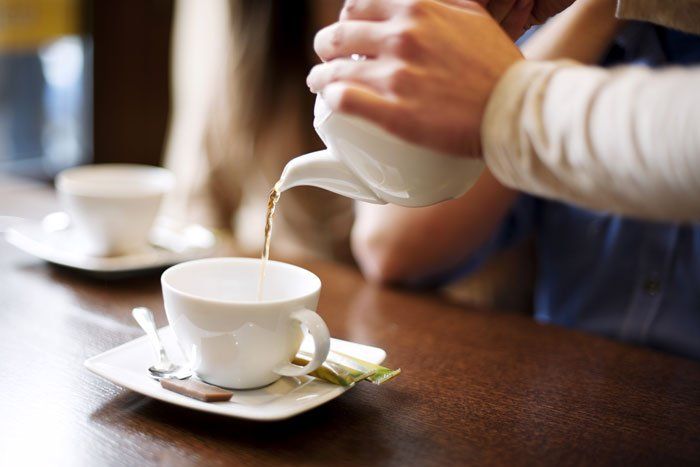
is the last step. Here again many many restaurants drop the ball. All coffees are not created equal and the bar manager should lead the charge here for a great cup of coffee. Notice I said great … not good. Forty years ago a trick restaurant owners had to make their coffee great was simply to pour three espresso cups into every pot of coffee made. People that order coffee obviously like coffee and usually drink a lot of it. It takes a LOT to impress a coffee drinker today but the restaurant should try to. The tea selection has to be great for the same reason.
The cream and sugar that comes is very old hat. Ask them if they prefer milk or cream. Bring it on a tray with white sugar, brown sugar, and cubed brown sugar. Have artificial sweetener available. Put a flower on the tray. How about going further? Serve crystallized sugar on a stick. Yes, the customer will look at it and exclaim “This is so cool.” Yes, the entire dish of nine sticks may vanish in the coffee for three but comfort yourselves with the fact that they will be showing the sticks to friends saying “Look at this sugar stick I got from …” Cheap advertising indeed.
It is at this point that bill paid, the customer is helped on with their coat and the door opened with a departing “Thank you for dining here, we look forward to seeing you again, Good night” with a smile.
This is where the customer will – and rightly so – say or think “That was great ! I want to come back.“



